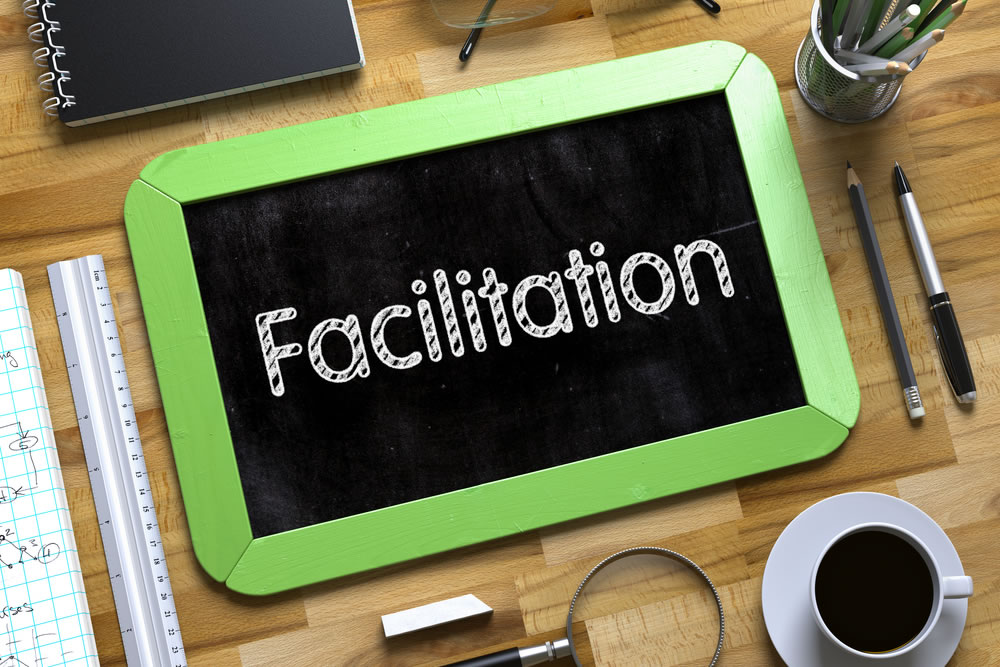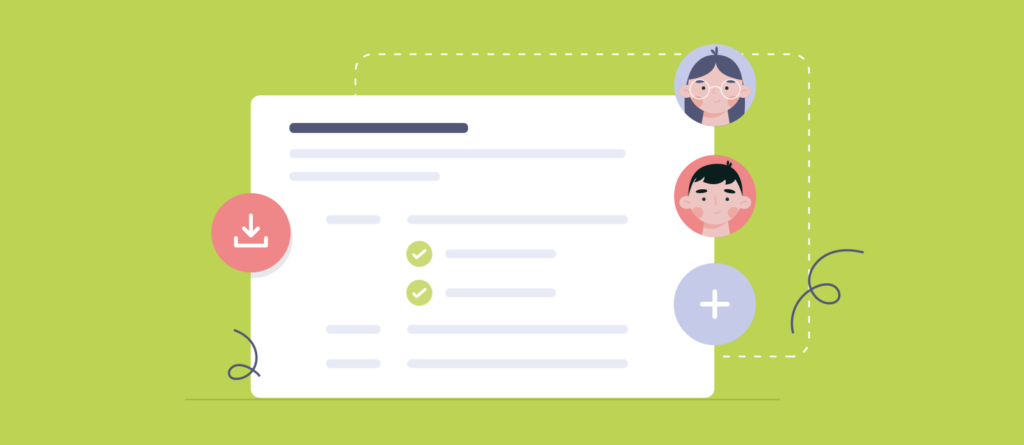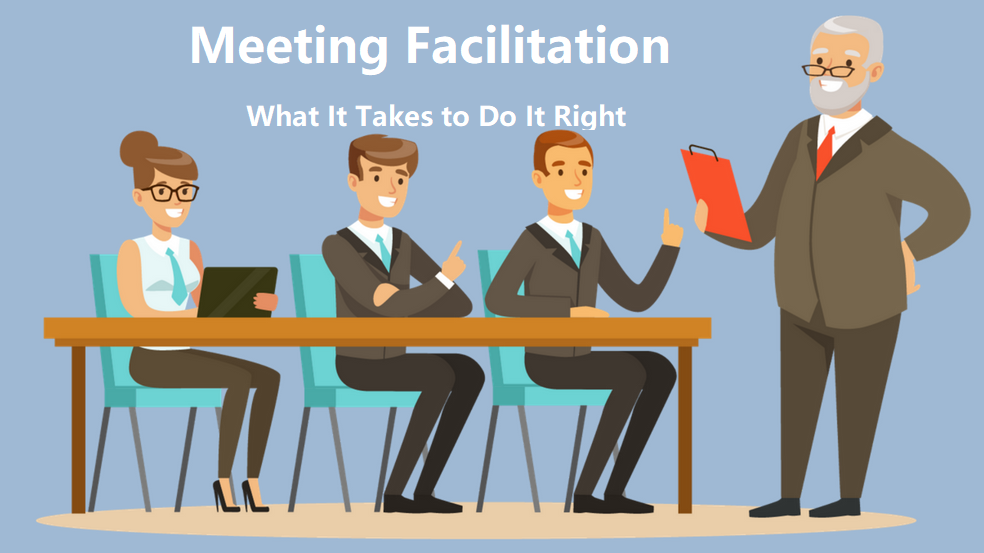“This meeting should have been an email.” We’ve all felt the pain of spending an hour in a meeting that went nowhere. Plenty of workplace matters can be resolved over email and messages.
However, there are some issues and opportunities that require an “all hands on deck” approach. Here’s how you can facilitate a meeting that drives consensus, makes decisions, and leads to solutions.
Meeting facilitator definition
There’s a difference between hosting and facilitating a meeting. Hosts typically set the agenda, start the meeting, and ask questions to keep the meeting moving. Facilitating a meeting entails driving consensus, efficiency, and inclusivity for the team. Facilitators are responsible for ensuring that everyone can participate in the meeting and any decision-making that takes place. This role is neutral in nature and avoids involvement in any type of conflict during the meeting. Facilitators may be selected based on their lack of invested interest in the meeting. Doing so gives them an unbiased point of view.
What does a meeting facilitator do?

What does a meeting facilitator do? Responsibilities may include any of the following:
- Sharing the agenda, asking for talking points, and allotting time to each key section
- Setting up any materials for the agenda, including chargers, cables, pens, paper, Zoom invitations, breakout rooms, and audio-visual equipment
- Beginning the meeting by sharing the agenda, leading introductions, and detailing any guidelines or practices
- Maintaining a commitment to the agenda throughout the meeting
- Redirecting participants to the topic at hand and tabling any off-topic discussion
- Encouraging participation
- Summarize points made
- Asking clarifying questions
- Holding votes or polls to drive consensus and make decisions
- Managing time
- Recording notes and action items
- Listening for potential concerns and unresolved issues
Roles similar to facilitators
Depending on the size and purpose of your meeting, you may choose to have co-facilitators. These roles have the same overall purpose but take turns leading the meeting and may divide up responsibilities. Here are some other roles similar to facilitators that you may wish to include:
- Clock-watcher: This role keeps an eye on the clock to ensure that the meeting ends and starts on time. They also keep track of who is next in line to speak and any amount of time allotted to particular portions of the agenda.
- Recorder: The recorder takes notes, jots down follow-up items, and collects any materials at the meeting.
- Vibe-checker: This role keeps a tab on the overall atmosphere. Is everyone getting a chance to participate? Is anyone shutting down, or is a conflict brewing? They take steps to intervene when needed, so small conflicts don’t turn into larger issues.
- Welcomer: The welcomer is a must-have at larger meetings and conferences. This role will open the doors (whether physical or virtual) to the meeting on time, direct participants to where they need to go and distribute materials.

Meeting facilitation is certainly a skill; think of it like a muscle that grows stronger the more you use it. You’ll also want to have a high degree of empathy, flexibility, and confidence.
The benefits of having a meeting facilitator
So, why assign a facilitator? Facilitators are skilled leaders who can help groups make decisions and work toward a common goal. If you have a meeting coming up that involves several different stakeholders, you’ll likely need someone there to help keep things on track. We’ve all been in meetings where plenty of things are discussed but few decisions get made. A facilitator will keep decision-making at the forefront of the meeting and curb any diversions.
There are a few ways facilitators can move participants toward a common purpose and solution.
Listen to understand
First, they can use active listening skills to understand each participant’s point of view and needs. By asking clarifying questions, they can get to the root of the discussion and avoid any confusion for other participants. You can expect many meeting participants to be in “listen to respond” mode. This isn’t uncommon when each person has their own agenda that they want to push through. The facilitator, however, is there to listen to understand. Instead of thinking about their own needs, they’re focusing on bringing the needs of each participant together into a solution that resolves them.
Frame the conversation and clarify
Next, facilitators drive comprehension amongst the group. Each participant needs to understand what’s been said so far. Facilitators can help achieve this by saying, “What I’m hearing from Mike is that you want a solution that meets said need.” They can also push the conversation to the next step by saying, “Now that we’ve addressed needs from the marketing team, I’d like to explore in greater detail how these needs overlap with what we’re hearing from the development department.”
Identify connections to build common ground
Creating connections is paramount to decision-making. The facilitator should help the group understand areas of common ground and lead the discussion to synthesize them into a solution. This step is often accomplished by sharing a summary of what’s been shared. This information is compiled into a proposal that highlights common ground. Then, the team can discuss solutions that address the most pressing, common needs. It’s important to also open up discussion for ways to resolve differences.
Set norms and virtual meeting etiquette
Of course, we can’t neglect to mention one of the biggest reasons to assign a meeting facilitator: virtual and hybrid meetings. Virtual meetings can be riddled with stops and starts if there isn’t an agenda in place and a skilled leader to carry it out. Hybrid meetings add an additional layer of complexity. Virtual participants may have trouble being heard due to equipment or connectivity issues. In-person participants may talk over virtual colleagues by mistake or due to a lack of meeting etiquette.
Having a meeting facilitator can help to eliminate this chaos. You’ll want to be sure they include guidelines for participation and carefully check any equipment prior to the meeting.
Related: Make Collaborative meeting plans easy
Use the right tools
What tools and platforms do your stakeholders need to make this meeting a success? This information should already be identified prior to setting the agenda. The facilitator can help ensure these tools actually get used during the meeting. They may assign someone to set up the equipment as well as share links and access prior to the meeting. For example, if the marketing department tracks steps in a project management tool, the facilitator can remind the team to share relevant information during the meeting.
If you’re hosting a large meeting, be sure that any screens or equipment you use is large enough for all participants (whether virtual or in-person) to view and use easily. Vibe’s Smartboard Pro 75” is perfect for commanding attention in your next meeting, no matter the number of participants. Annotate, take notes, sketch, and conceptualize from any device, anywhere in the world in real-time.
{{< blog/cta-1 “Use Vibe smart board for your meeting” “https://vibe.us/lp/scenario-meeting” >}}
Prepare for next steps
Deciding on what to do next during a meeting is one thing — actually doing it is another! Having a facilitator can help your team avoid walking away from the meeting with no plans in place. Decisions, next steps, and tasks should be documented for reference and completion. The facilitator will review these items before concluding the meeting to ensure everyone understands what to do next. This step is also important for boosting morale. Everyone should leave the meeting ready to take action.
Tips for setting your meeting agenda

For facilitators, setting the agenda is the most important step prior to the meeting itself. The agenda should be strategic and driven to support decision-making. At a minimum, facilitators can plan to complete these tasks to set and carry out the agenda:
- Identify the purpose
- Determine goals and desired outcomes
- Build the meeting action plan
- Set an allotted amount of time for each portion of the meeting
- Assign sections and points to the appropriate participants
- Define any activities and guidelines for the meeting in detail
- Share the agenda with stakeholders in advance and make any necessary adjustments
- Discuss the agenda prior to the actual start of the meeting with the participants
- Place important but off-topic ideas in a “parking lot section” for future discussion (virtual sticky notes on your interactive whiteboard is a fun way to accomplish this task!)
- Create follow-up tasks for post-meeting work
Facilitating a meeting is no easy task, but it’s one worth committing to for the long haul. If your meetings are feeling a little lackluster these days, you’ll love these ideas for engaging icebreakers and games to reenergize your team.
Vibe offers a collaborative solution combining a digital whiteboard and innovative smart software. Increase engagement and efficiency at your meeting sessions by integrating your favorite applications with video conferencing and an infinite, mess-free writing canvas. Collaborate today with Vibe.
